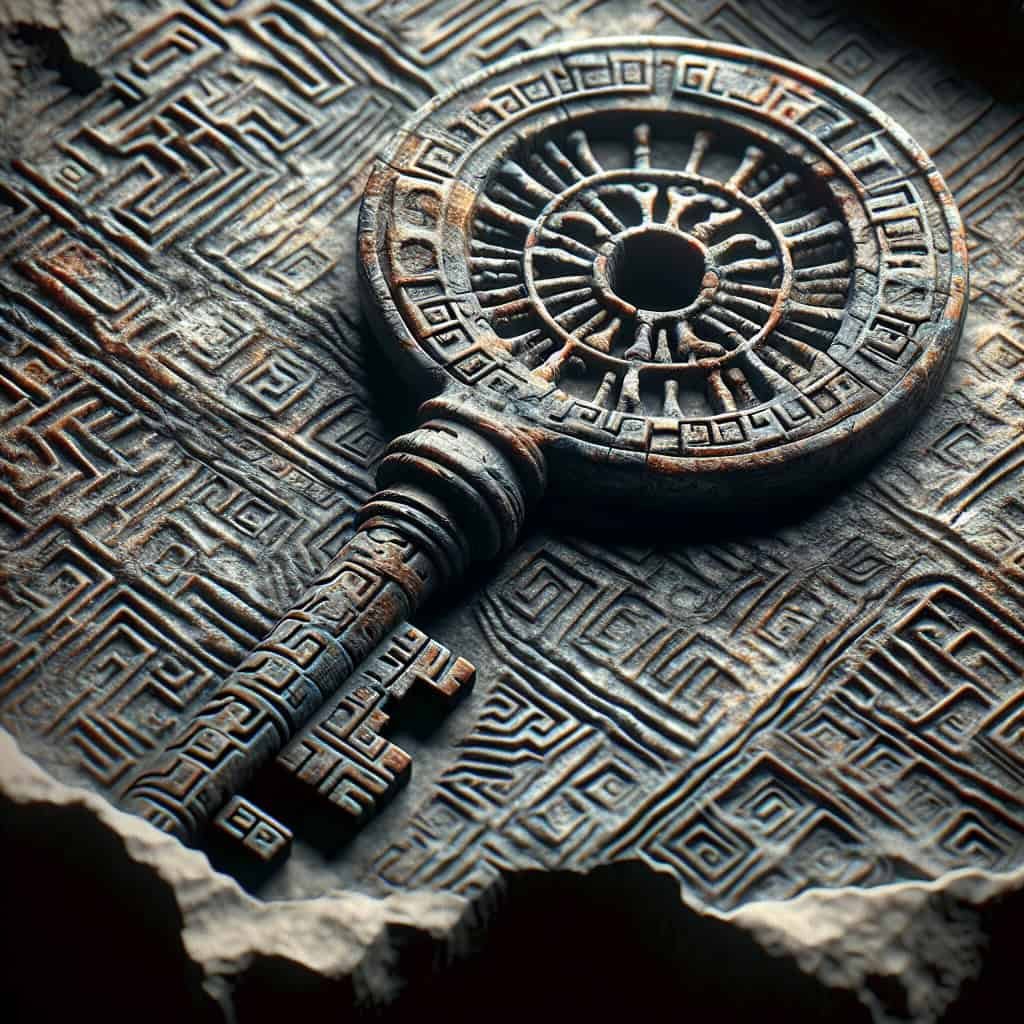Have you ever wondered if there are any hidden, secret archaeological sites or ruins that hold great historical value? It’s a fascinating thought, isn’t it? Uncovering remnants of the past that have managed to evade discovery for centuries, holding untold stories and secrets within their ancient walls. From lost civilizations to forgotten treasures, these hidden gems have the potential to rewrite history and shed light on our ancestors’ way of life. So, let’s embark on a journey of exploration and imagination as we ponder the existence of these elusive archaeological wonders.

Unearthing Hidden Treasures
Have you ever dreamed of embarking on a thrilling expedition to unearth hidden treasures from the depths of history? The world is brimming with mysterious locations and enigmatic monuments that hold the potential to reveal extraordinary secrets. Join us on a journey as we delve into the captivating stories surrounding some of the most intriguing archaeological sites and ruins.
Expeditions Leading to Discovery
Throughout history, intrepid explorers and archaeologists have embarked on daring expeditions, driven by their insatiable curiosity to unravel the mysteries of the past. These expeditions have been instrumental in unearthing hidden treasures and shedding light on long-lost civilizations. With a painstaking attention to detail and an unwavering spirit of adventure, these brave individuals have played a pivotal role in piecing together the puzzle of our collective history.
Mysterious Locations
There are numerous locations around the globe that continue to captivate the imaginations of people worldwide. From the lost city of Atlantis to the hidden wonders of Machu Picchu, these sites have both fascinated and baffled scholars and enthusiasts alike. Exploring these mysterious locations allows us to unlock forgotten stories, providing glimpses into ancient civilizations that were once thought to be mere legends.
Enigmatic Monuments
Beyond the extensive list of ancient wonders and archaeological marvels, there are certain monuments that stand out as particularly enigmatic. Stonehenge, the Forbidden City, and the Nazca Lines are just a few examples of these bewildering structures. Despite years of study and speculation, their original purposes and meanings remain elusive. These enigmatic monuments serve as a constant reminder that there are still secrets waiting to be uncovered, waiting to reveal their profound significance.
The Lost City of Atlantis: Myth or Reality?
Ancient Accounts
The legend of the lost city of Atlantis has mesmerized countless generations, captured in the writings of Plato and other ancient accounts. According to these tales, Atlantis was a technologically advanced civilization that sank beneath the waves, lost to the world forever. As intriguing as it sounds, the search for Atlantis has been fraught with controversy and uncertainty.
Controversial Search Efforts
Over the centuries, many explorers and scholars have attempted to locate the elusive city of Atlantis. However, the lack of concrete evidence and the interpretive nature of the ancient texts have made this search particularly challenging. From theories locating Atlantis in the Mediterranean to others suggesting its existence in the Americas, the debate continues to fuel speculation and inspire new quests for the lost city.
Possible Locations
While Atlantis remains shrouded in mystery, several locations have been proposed as potential sites for this ancient civilization. The ruins of Santorini, the Bahamas, and even Antarctica have all been put forward as possible locations for Atlantis. Despite the absence of definitive proof, the allure of Atlantis endures, drawing countless adventurers to embark on quests to solve one of history’s most enduring enigmas.
The Hidden Wonders of Machu Picchu
Rediscovery and Exploration
Nestled high in the Andes Mountains of Peru lies the awe-inspiring ancient city of Machu Picchu. Rediscovered by Hiram Bingham in 1911, this “Lost City of the Incas” continues to captivate visitors with its breathtaking beauty and mystique. Since its discovery, archaeologists and historians have carefully explored and studied the ruins, unraveling the secrets of this remarkable civilization.
Significance and Mysteries
Machu Picchu served as a sacred site for the Inca people, believed to be a royal retreat and a center of spiritual significance. The intricate stonework, strategically designed agricultural terraces, and mysterious structures have sparked numerous debates among researchers. Questions surrounding its purpose, the reasons for its abandonment, and the role it played in Incan society make Machu Picchu an ongoing source of fascination and inquiry.
Ongoing Research
Despite decades of exploration and study, Machu Picchu continues to reveal new insights into the lives of the Inca people. Ongoing research focuses on deciphering the intricate architectural techniques employed, understanding the spiritual and ceremonial significance of the site, and exploring the surrounding landscape for further hidden treasures. The mysteries of Machu Picchu persist, inviting explorers to uncover more of its fascinating history.
The Enigma of Stonehenge
Historical Context
In the verdant rolling hills of Wiltshire, England, stands one of the world’s most iconic and enigmatic prehistoric monuments – Stonehenge. Dating back to around 3000 BCE, Stonehenge has long fascinated archaeologists, historians, and visitors alike. Placed on the UNESCO World Heritage List, this ancient site offers a window into the distant past and raises questions about its origins and purpose.
Construction and Purpose Theories
The construction of Stonehenge is a remarkable feat of engineering, with massive stones transported from distant quarries and painstakingly arranged in a circular pattern. Many theories have emerged to explain its purpose, ranging from a burial site to an astronomical observatory. The significance of Stonehenge within the Neolithic society and its role in marking celestial events continue to be the subject of much speculation and research.
Unexplored Areas
While Stonehenge has been studied extensively, there are still unexplored areas within its expansive landscape. Recent technologies, such as ground-penetrating radar and LiDAR, have revealed the presence of underground features and other structures surrounding the monument. These discoveries hint at the possibility of additional archaeological remains yet to be fully explored, promising to shed further light on the mysteries of Stonehenge.

The Forbidden City: A Lost Dynasty
Imperial Secrets
In the heart of Beijing, China, lies the awe-inspiring UNESCO World Heritage Site known as the Forbidden City. This sprawling palace complex, once the seat of power for the Chinese emperors, is steeped in secrecy and intrigue. For over 500 years, the Forbidden City remained off-limits to all but the imperial ruling class, its opulent halls holding countless secrets.
Hidden Rooms and Treasures
Behind the imposing walls and intricately designed gates of the Forbidden City are hidden rooms and treasures waiting to be discovered. Throughout the complex, hidden chambers, underground passages, and concealed gardens provide a glimpse into the private lives of the imperial family. These secret spaces house precious artifacts, ornate furnishings, and valuable artworks, preserved through the ages.
Ongoing Preservation Efforts
Recognizing the historical and cultural significance of the Forbidden City, ongoing preservation efforts aim to protect this extraordinary site for future generations. Restoration projects, conservation initiatives, and advanced technologies are employed to safeguard the Forbidden City’s architecture, artworks, and delicate structures. These efforts ensure that the legacy of this lost dynasty remains intact and accessible to visitors from around the world.
Pompeii: A Frozen Glimpse into the Ancient World
The Tragic Eruption
In the shadow of Mount Vesuvius, the ruins of Pompeii stand as a haunting reminder of the catastrophic volcanic eruption of 79 CE. Frozen in time by layers of ash and pumice, this ancient Roman city was preserved in remarkable detail, offering a unique insight into daily life during the height of the Roman Empire.
Preserved Life and Artifacts
The meticulous preservation of Pompeii allows us to witness the everyday existence of its inhabitants. Lavishly decorated villas, bustling marketplaces, and the haunting plaster casts of the city’s residents provide an intimate glimpse into their lives. Artifacts recovered from the site, including stunning frescoes, intricate mosaics, and household objects, further enrich our understanding of this ancient civilization.
Recent Discoveries
Despite Pompeii being one of the most extensively excavated ancient sites, new discoveries continue to be made. Ongoing excavations have revealed previously untouched areas and brought to light further details about the lives of the people who once called Pompeii home. With each new find, the tragedy of the eruption becomes more personal, emphasizing the immense historical significance of this remarkable archaeological site.

The Nazca Lines: Extraterrestrial Connections?
Mysterious Geoglyphs
Etched into the vast desert plains of southern Peru, the Nazca Lines remain one of the world’s greatest enigmas. Comprising over 800 straight lines, geometric shapes, and animal figures, these massive geoglyphs can only be fully appreciated from above. The scale and precision of these drawings have led to wild speculation about their origins and purpose.
Purpose and Techniques
While the exact purpose of the Nazca Lines remains unknown, several theories have emerged. Some believe they were used for astronomical or ceremonial purposes, while others suggest they served as navigational aids or even massive artworks. The techniques used to create these enigmatic figures are equally baffling, as the ancient Nazca people lacked advanced technology or the ability to view their art from above.
Alien Theories
The Nazca Lines have long fueled alien and extraterrestrial theories, capturing the imagination of enthusiasts and conspiracy theorists. Despite the lack of evidence supporting these claims, the mysteries surrounding the purpose and creation of these colossal geoglyphs continue to invite speculation and draw visitors eager to marvel at these ancient works of art.
The Elusive Tomb of Genghis Khan
Legendary Conqueror
Genghis Khan, the legendary Mongol conqueror, amassed one of the largest empires in history. Despite his tremendous impact on the world, the exact location of his tomb remains a tantalizing mystery. The allure of discovering the final resting place of this iconic figure has motivated countless expeditions and fueled speculation for centuries.
Historical Records and Clues
The hunt for Genghis Khan’s tomb has been hindered by a scarcity of historical records and conflicting accounts. The nomadic Mongol tradition of deliberately concealing burial sites and the empire’s vast territory further complicates the search. However, recently discovered documents and archaeological evidence, including ancient texts and the exploration of potential locations, have rekindled hope that the tomb may one day be found.
Unconfirmed Speculations
Numerous theories have emerged regarding the potential location of Genghis Khan’s tomb. Mongolia’s sacred Burkhan Khaldun mountain is considered a likely candidate, as it holds great spiritual significance and is associated with the fearless leader. Some believe that the tomb was intentionally hidden among the vast Mongolian steppe, while others suggest it may be concealed within one of the ancient cities the empire once conquered. Until the tomb is discovered, these speculations remain unconfirmed, adding to the air of mystery that surrounds the legendary Genghis Khan.

The Forgotten City of Petra
Lost to History
Nestled amidst the rugged mountains of modern-day Jordan lies the ancient city of Petra. Carved into rose-red sandstone cliffs, Petra was once a thriving Nabatean capital, an important trading hub along the ancient Silk Road. However, after the fall of the Roman Empire, the once-flourishing city gradually faded from memory, only to be rediscovered by a Swiss explorer in the early 19th century.
Breathtaking Architecture
The architecture of Petra is a testament to the ingenuity and craftsmanship of its ancient inhabitants. Elaborate temples, palaces, and tombs harmoniously blend with the natural landscape, creating a city of unparalleled beauty. The most iconic feature of Petra is the Treasury, with its intricate façade carved into the cliffs, captivating visitors with its grandeur.
Hidden Secrets
While much has been revealed about the daily life and architectural wonders of Petra, there are still hidden secrets waiting to be uncovered. The vastness of the ancient city, as well as its extensive network of underground tunnels and chambers, suggests that there is much more to unravel. Ongoing research and excavations aim to shed further light on the mysteries concealed within the rose-red city.
Exploring the Ancient Mayan Civilization
The Rise and Fall of a Civilization
The ancient Maya civilization flourished in Mesoamerica for over 2,000 years, leaving behind a rich cultural legacy. This advanced civilization made remarkable advancements in astronomy, mathematics, and architecture. However, the reasons for the sudden decline of the Maya and the subsequent abandonment of their cities remain a topic of debate and intrigue.
Hidden Cities and Temples
The ancient Maya built magnificent cities throughout the rainforests of Mexico, Belize, Guatemala, and Honduras. These cities, such as Tikal, Chichén Itzá, and Palenque, contain awe-inspiring pyramids, ornate temples, and intricate sculptures. Exploring these hidden cities allows us to glimpse into the daily lives, religious practices, and societal structures of this enigmatic civilization.
Untranslated Hieroglyphs
One of the greatest challenges in understanding the Maya lies in the deciphering of their intricate hieroglyphic writing system. Despite significant advancements in recent decades, a portion of these hieroglyphs remains untranslated, hiding crucial historical and cultural information. Ongoing research and collaborations among scholars aim to decode the remaining Maya texts, promising to unveil additional insights into this mesmerizing civilization.
In conclusion, the exploration of secret archaeological sites and ruins holds immense historical significance. These hidden treasures provide us with a tantalizing glimpse into the past, allowing us to unravel the mysteries of ancient civilizations. Whether it’s the mythical lost city of Atlantis, the ancient wonders of Machu Picchu, or the enigmatic Stonehenge, these extraordinary sites continue to fascinate and inspire adventurers, researchers, and history enthusiasts around the world. Join the quest to uncover hidden secrets, preserve our collective heritage, and celebrate the wonders of our shared history.

